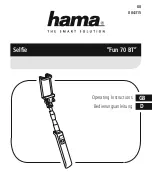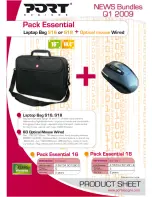
4
Congratulations on your purchase of the Celestron NexStar! The
NexStar i-series
telescopes are precision
scientific instruments that will allow you to enjoy viewing numerous objects in the night sky — planets,
nebulae, star clusters, galaxies and more. Equipped with high speed motors and hand control, the
NexStar-i
allows you to remotely move your telescope to desired objects quickly and accurately. At a touch of a button,
you can move your telescope across the sky in a matter of seconds and track objects remotely as the Earth
rotates beneath them. The
NexStar-i
is fully upgradeable and can be equipped with the optional NexStar
Hand Control with a database of over 40,000 objects (see the Computerized Hand Control section of this
manual) for fully automated operation.
Some of the many standard features of the NexStar include:
•
Incredible 6°/second (or faster) slew speed.
•
Fully enclosed motors on both axes.
•
Integrated hand controller – built into the side of the fork arm.
•
Expandability to add smart accessories such as Computerized Hand Control and GPS capabilities.
Many other high performance features!
The NexStar’s deluxe features combine with Celestron’s legendary Schmidt-Cassegrain optical system to
give amateur astronomers one of the most versatile and easy to use telescopes available on the market
today.
Your NexStar telescope is designed to give you years of fun and rewarding observations. However, there are
a few things to consider before using your telescope that will ensure your safety and protect your equipment.
W
W
a
a
r
r
n
n
i
i
n
n
g
g
Y
Never look directly at the sun with the naked eye or with a telescope (unless you have the proper
solar filter). Permanent and irreversible eye damage may result.
Y
Never use your telescope to project an image of the sun onto any surface. Internal heat build-up can
damage the telescope and any accessories attached to it.
Y
Never use an eyepiece solar filter or a Herschel wedge. Internal heat build-up inside the telescope can
cause these devices to crack or break, allowing unfiltered sunlight to pass through to the eye.
Y
Never leave the telescope unsupervised, either when children are present or adults who may not be
familiar with the correct operating procedures of your telescope
.





































